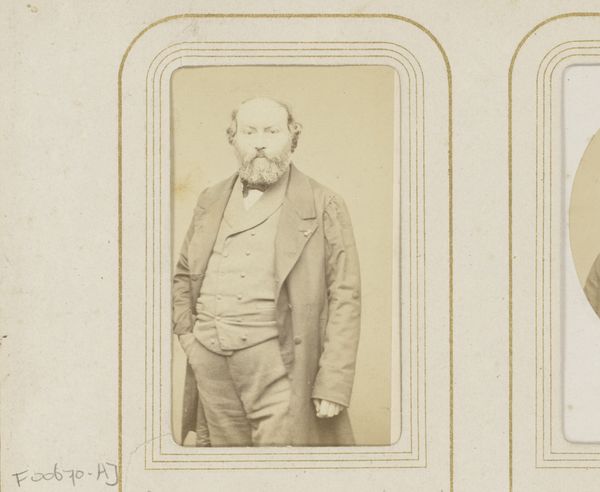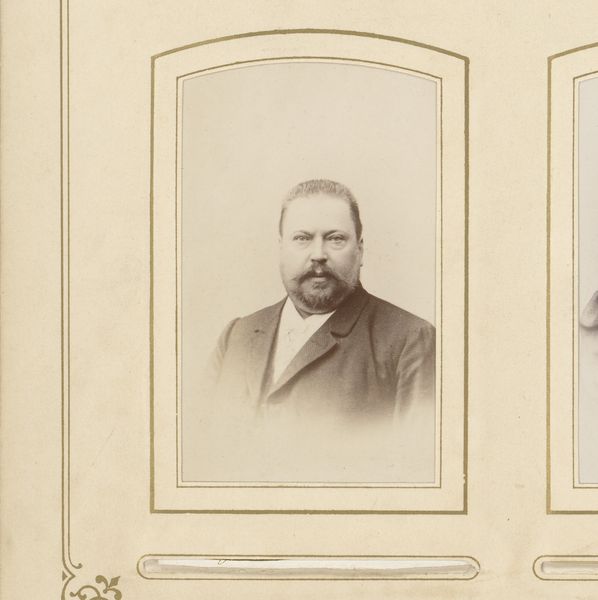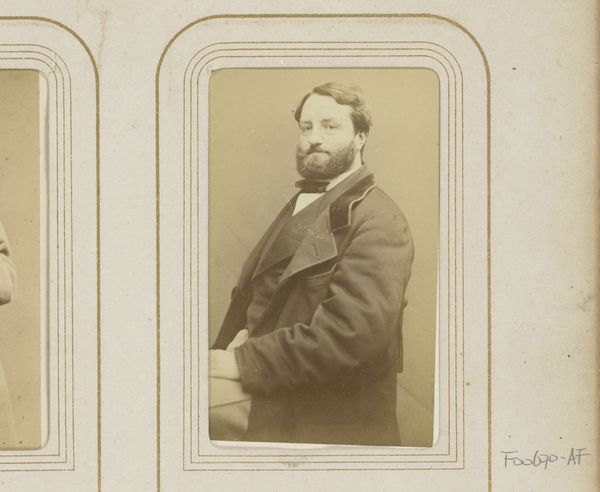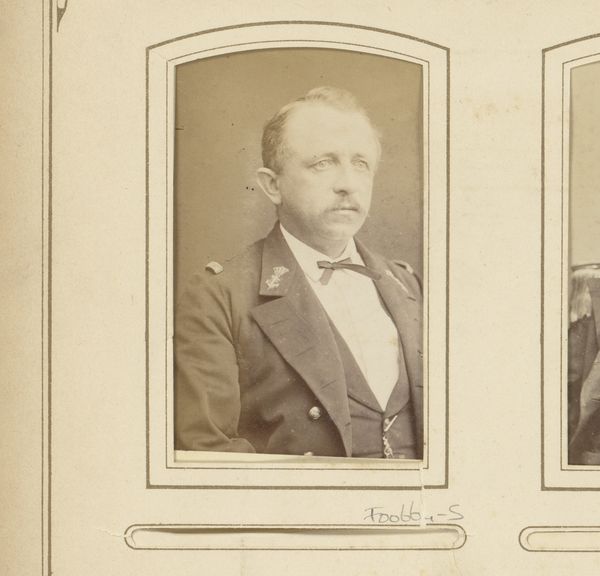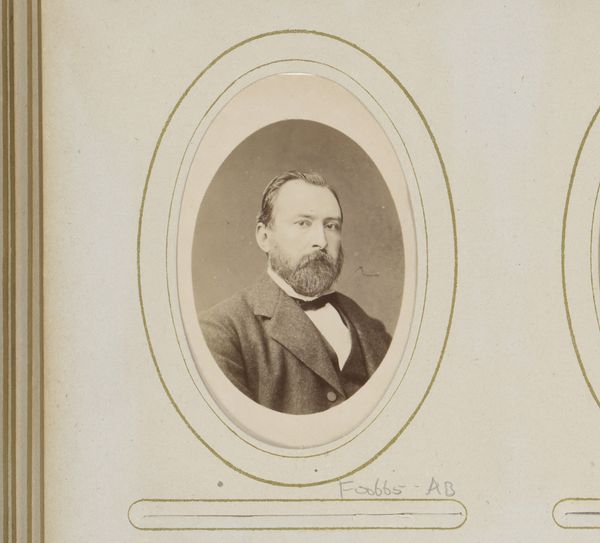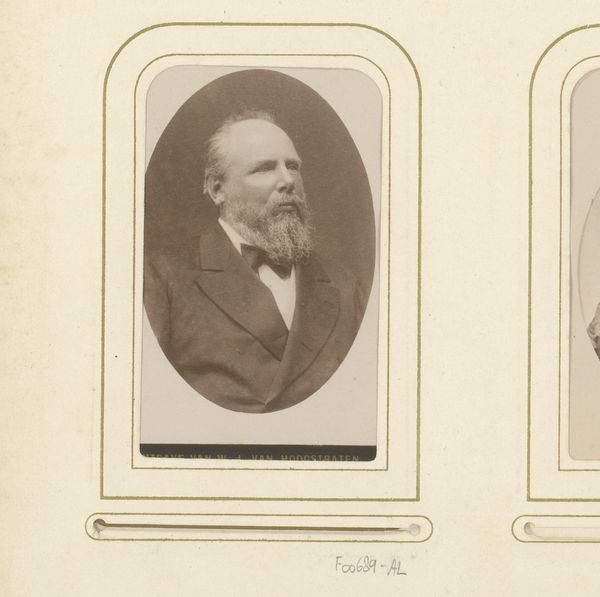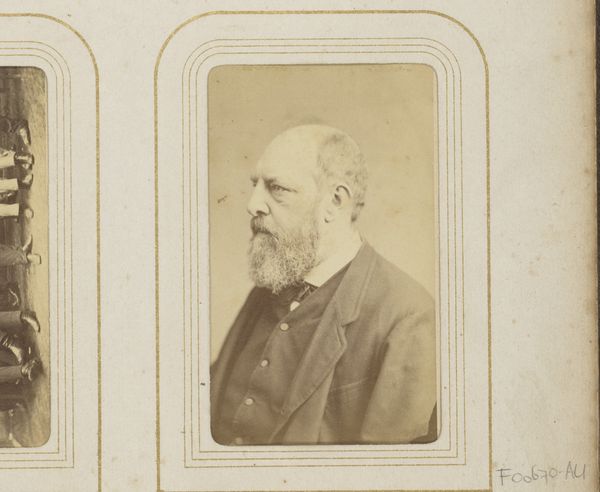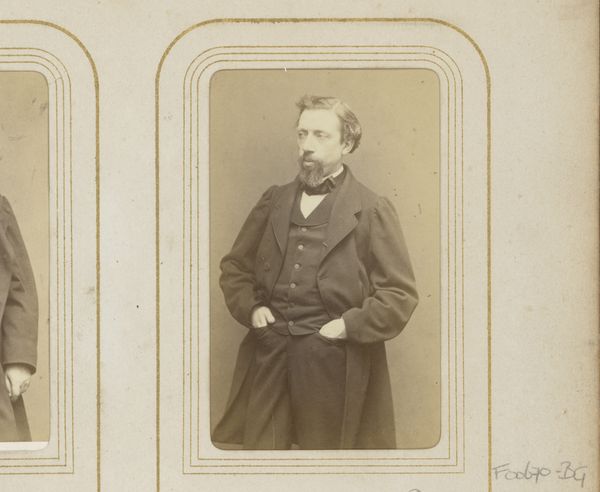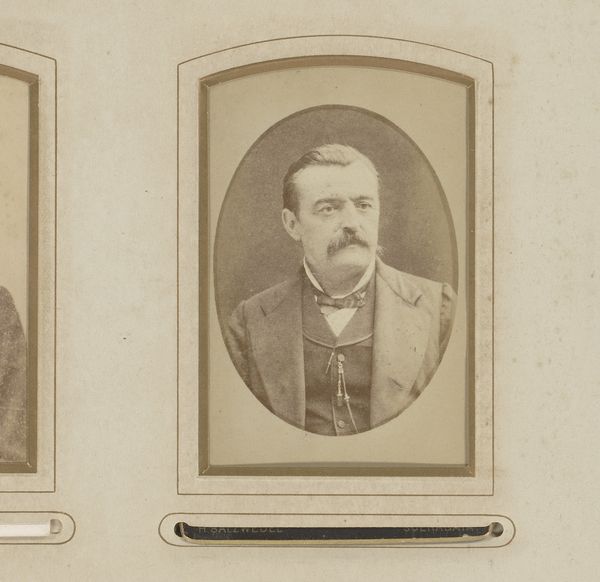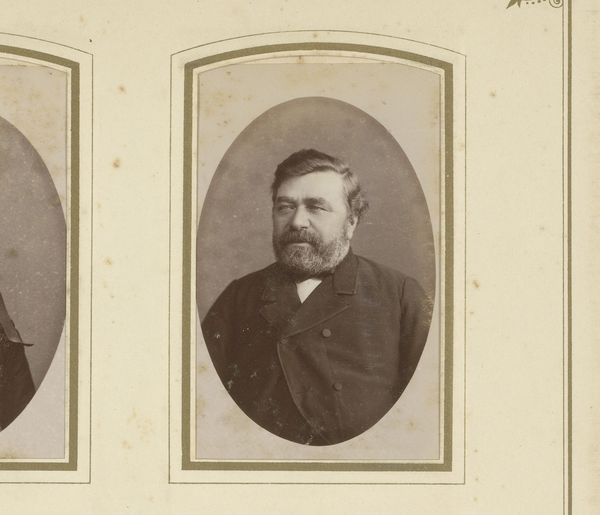
photography
#
portrait
#
photography
#
historical photography
#
19th century
#
genre-painting
Dimensions: height 84 mm, width 51 mm
Copyright: Rijks Museum: Open Domain
Curator: Georges Mathurin Legé captured this photograph, “Portret van Tamberlick,” sometime between 1867 and 1872. Editor: My first thought is how the sepia tone softens the gaze of the subject, there’s a melancholic stillness. Curator: It’s fascinating to consider this portrait within the historical context of 19th-century photography, especially the rise of portraiture and its social implications for identity representation and class. The subject, Tamberlick, presumably belonged to a certain elite circle. How does the photographer present him? What messages are conveyed about masculinity, status, and power through this portrait? Editor: You are right! He almost looks like a powerful industrialist in repose! Though, this repose is so carefully staged, don't you think? Like an actor trying to convey deep thought rather than experiencing it. Do you know who Tamberlick was? Curator: He was likely a significant public figure in his time. These photographs offered an almost standardized form of representation. We can examine the relationship between Legé, as the photographer, and his subject, in relation to the power structures present in their society. He likely wanted to signal respectability. Editor: So he used the established language to create the expected narrative. Maybe this is why I feel this slightly sad theatricality emanating from the photo. A sense that the sitter has, perhaps, given himself over entirely to what was expected of him, of his role? It's a strangely passive kind of power, then. A giving in. Curator: That passivity might speak to a tension. The very act of sitting for a portrait at that time carried a certain weight, didn’t it? I think by exploring such nuances we can learn so much more about our collective cultural values and the history of representation. Editor: It certainly gives me much to think about! This conversation took me on a ride to contemplate more on performance and cultural expectations. Thanks for the insights.
Comments
No comments
Be the first to comment and join the conversation on the ultimate creative platform.
